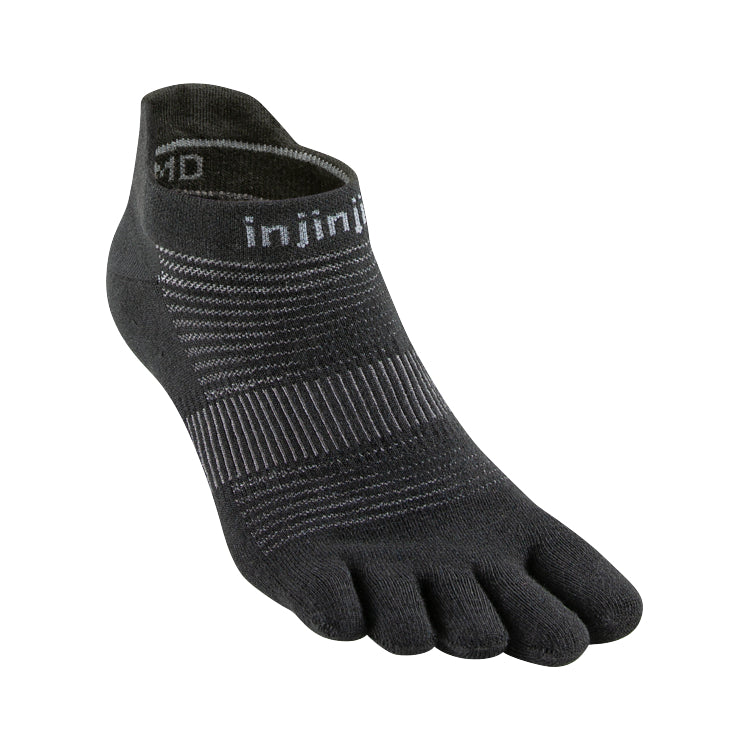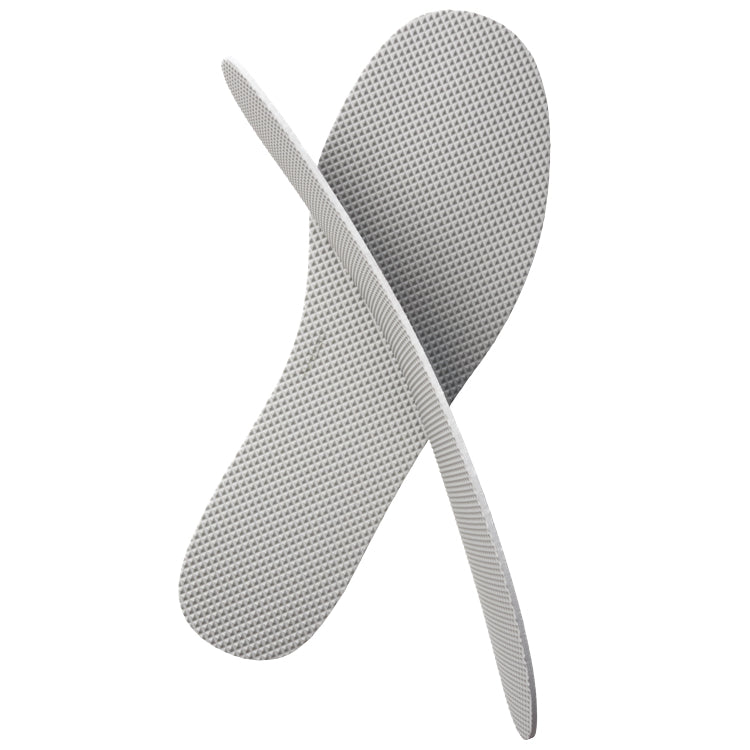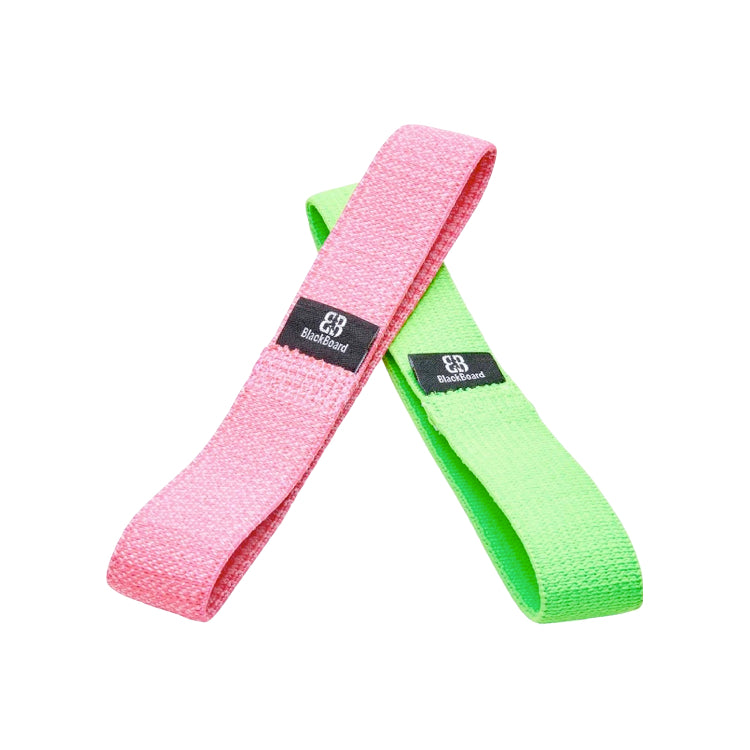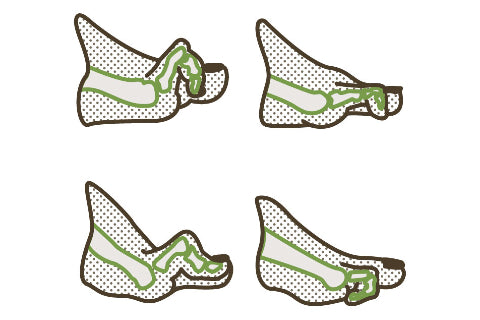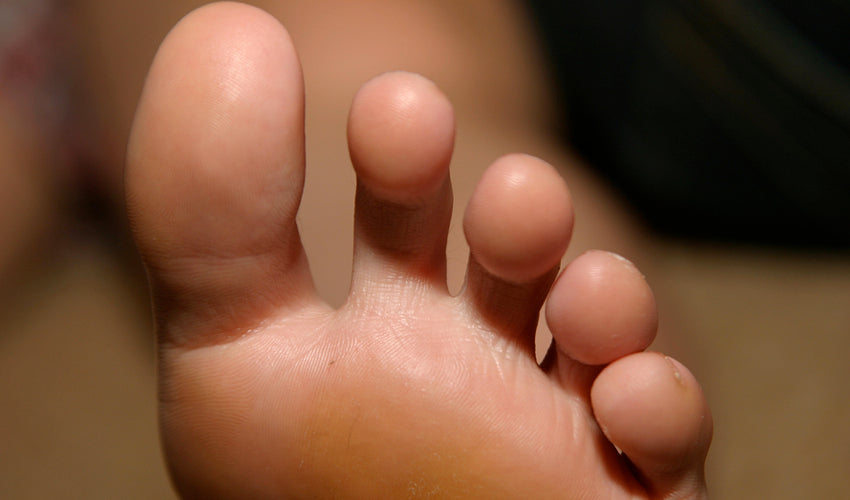
Healthy Toes
Healthy toes are straight, evenly spaced, and free of the many problems that plague so many people in shod, or shoe-wearing, populations. Most conventional footwear, including running shoes, possesses tapering toe boxes that force the toes into a wedge-like position. This design characteristic, along with heel elevation and toe spring, causes many foot problems and toe deformities over time.
Unshod populations, or groups of people who go barefoot or wear open-toe sandals or other minimalist footwear, have some of the healthiest toes. Examination of feet in unshod populations throughout South and Central America, Africa, and Asia reveals toes that are well splayed and devoid of bunions, crooked toes, hammertoes, and other structural problems.
Healthy feet are widest at the ends of the toes (not at the ball of the foot, as is common among long-term shoe-wearing individuals) and possess toenails that are fungus free and fully intact. Healthy feet and toes are the visual evidence of a life lived in balance with nature. In many cases, healthy feet and toes are prognostic indicators of biomechanical function and musculoskeletal health throughout the rest of the body.
Toes and Activity
Toes are among the most important body parts used in many physical activities. Toes help generate the propulsive force required for walking and running, and they provide enhanced balance, especially when they are allowed to splay the way nature intended.
Balance is particularly enhanced when the big toe is in line with the inside edge of your foot and the little toe is in line with (or slightly beyond) the outside edge of the foot—a scenario that is less common in shoe wearing individuals, whose big and little toes often deviate toward the foot’s midline. The big and little toes—in the wide, splayed configuration—in combination with the heel serve as an important tripod of support.
Toes are also important for proprioception and providing tactile feedback. Proprioception is the body’s ability to sense the position of its parts, both at rest and during movement. Tactile feedback is the information body parts send to the brain about how the surrounding environment, including the ground that's being walked upon, is affecting the body. Both proprioception in and tactile feedback from the toes help a person accurately place his or her footfalls during running and walking.
Misaligned Toe Problems
Maintaining optimal toe alignment is important for avoiding foot and other lower extremity problems. Bunionettes, bunions, crooked toes, ingrown toenails, hallux limitus and rigidus, hammertoes, neuromas, plantar fasciosis, runner's knee, sesamoiditis, and toenail fungus are all possible foot-related health problems associated with misaligned toes. Shin splints and knee osteoarthritis are other lower extremity health problems that may, in large part, be caused by misaligned toes.
A toe spacing product, such as Correct Toes, helps re-approximate misaligned toes to their normal anatomical position and provides both immediate and long-term relief from numerous symptoms. Correct Toes can be worn inside men's or women's shoes that possess a sufficiently wide toe box, on bare feet, or over a pair of toe socks. They can also be worn to bed, as a night splint. Correct Toes, constructed of medical grade silicon, was created to help resolve numerous toe, foot, and lower extremity health problems.
Other conservative care methods for misaligned toes include rest, taping procedures, and, most importantly, the adoption of foot-healthy footwear. Schedule a visit with a naturally-minded foot care professional to better understand the role of conservative treatment techniques in resolving misaligned toe problems. A qualified professional can counsel you on the risks, benefits, and limitations of these therapies.

WANT TO IMPROVE YOUR FOOT HEALTH?
Let the team at Natural Footgear help you! Subscribe to our newsletter for the latest offers and helpful info, and sign up for our FREE email courses on various topics and foot health conditions.
Sign Up →
Want to Improve Your Foot Health?
We are here to help you every step of the way. Get our newsletter for the latest offers and helpful info, and sign up for our FREE email courses on various topics and conditions, including bunions, hammertoes, neuromas, plantar fasciosis, shin splints, ingrown toenails, and more.
Sign Up →
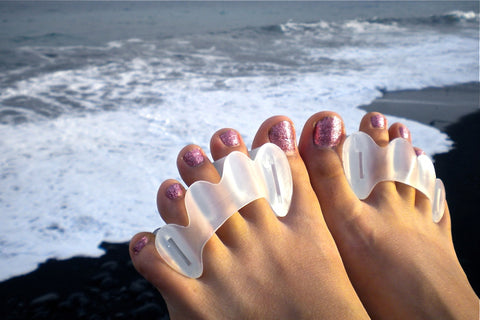 What if there was a way to reduce your chances of knee osteoarthritis and numerous foot and ankle problems? What if this approach was simple, logical, and cost-effective? What if it could address a wide variety of conditions, from joint pain to bunions to neuromas to ingrown toenails, as well as prevent these conditions from occurring? What if the philosophy was completely rational, as well as being backed by scientific...
Read more
What if there was a way to reduce your chances of knee osteoarthritis and numerous foot and ankle problems? What if this approach was simple, logical, and cost-effective? What if it could address a wide variety of conditions, from joint pain to bunions to neuromas to ingrown toenails, as well as prevent these conditions from occurring? What if the philosophy was completely rational, as well as being backed by scientific...
Read more





